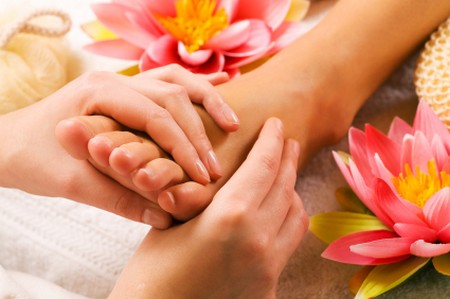Reflexology has been used for many thousands of years. A wall painting, dating from 2000 years BC, found in a physician’s tomb at Saqqara in Egypt shows men applying pressure to the feet of others. It has been used by many other cultures, too – native American Indian tribes, the Chinese and Africans.
But it wasn’t until the early part of the twentieth century that a more modern form came into common use. An American ear, nose and throat specialist, Dr William Fitzgerald, devised a system which applied pressure through the hands to certain parts of the body, known as zone therapy. A student of his work, physiotherapist Eunice Ingham took his work further by saying that the different areas of the body could be treated by working on the feet which she felt were more sensitive; and it was one of her students, Doreen Bayley, who brought this form of reflexology to the UK in the 1960s.

Reflexology is based on the belief that each part of the body is connected by energy pathways which all end in the feet and hands. There are ten vertical zones, five on each side of the body, which run from the head, down the arms and to the toes and all the body parts within each zone are linked by the energy pathways (see illustration). An organ within a particular zone will have a reflex site within the same zone on the foot. But illness, stress, bad diet and emotional upset can all block the energy pathways. By working on the zone in the foot, the energy block can be freed and health returned.
These reflex points are also found on the hands, but it is thought the feet are more sensitive to touch and are larger, making treatment easier.
How the therapy works
As reflexologists treat the person holistically – as a whole – the entire foot will be worked on. Gentle manipulation, using massage and pressure on the reflex points, will not only help the problem by releasing blockages but will be relaxing for the child. Tenderness in some areas will show where the problem may he. Some complaints may clear up after just one or two sessions, while others may take longer.
What to expect from a first visit
A first session may last about an hour as the reflexologist asks questions about your child’s health, background, diet, personality and lifestyle. They will also need to know if your child is on any medication and has had any operations. Your child will then be asked to he on a couch and their feet will be examined. The reflexologist will analyse the skin, colour, temperature and tissue of the feet as well as look for signs of infection. Reflexology does not tickle, although your child may feel discomfort or even pain in the area where there is a blockage, but the pressure will be adjusted to suit them. And as the treatment progresses, these areas should become less sensitive. As a sign that the body is going through the healing process, some symptoms may get worse before they get better. Many people tend to feel very tired after a session and your child may want to sleep.